JP Morgan Chase 2015 Annual Report Download - page 17
Download and view the complete annual report
Please find page 17 of the 2015 JP Morgan Chase annual report below. You can navigate through the pages in the report by either clicking on the pages listed below, or by using the keyword search tool below to find specific information within the annual report.-
 1
1 -
 2
2 -
 3
3 -
 4
4 -
 5
5 -
 6
6 -
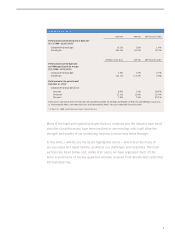 7
7 -
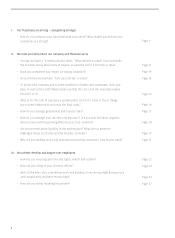 8
8 -
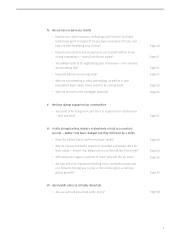 9
9 -
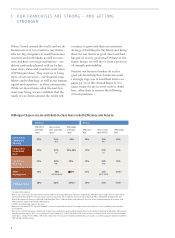 10
10 -
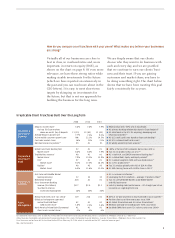 11
11 -
 12
12 -
 13
13 -
 14
14 -
 15
15 -
 16
16 -
 17
17 -
 18
18 -
 19
19 -
 20
20 -
 21
21 -
 22
22 -
 23
23 -
 24
24 -
 25
25 -
 26
26 -
 27
27 -
 28
28 -
 29
29 -
 30
30 -
 31
31 -
 32
32 -
 33
33 -
 34
34 -
 35
35 -
 36
36 -
 37
37 -
 38
38 -
 39
39 -
 40
40 -
 41
41 -
 42
42 -
 43
43 -
 44
44 -
 45
45 -
 46
46 -
 47
47 -
 48
48 -
 49
49 -
 50
50 -
 51
51 -
 52
52 -
 53
53 -
 54
54 -
 55
55 -
 56
56 -
 57
57 -
 58
58 -
 59
59 -
 60
60 -
 61
61 -
 62
62 -
 63
63 -
 64
64 -
 65
65 -
 66
66 -
 67
67 -
 68
68 -
 69
69 -
 70
70 -
 71
71 -
 72
72 -
 73
73 -
 74
74 -
 75
75 -
 76
76 -
 77
77 -
 78
78 -
 79
79 -
 80
80 -
 81
81 -
 82
82 -
 83
83 -
 84
84 -
 85
85 -
 86
86 -
 87
87 -
 88
88 -
 89
89 -
 90
90 -
 91
91 -
 92
92 -
 93
93 -
 94
94 -
 95
95 -
 96
96 -
 97
97 -
 98
98 -
 99
99 -
 100
100 -
 101
101 -
 102
102 -
 103
103 -
 104
104 -
 105
105 -
 106
106 -
 107
107 -
 108
108 -
 109
109 -
 110
110 -
 111
111 -
 112
112 -
 113
113 -
 114
114 -
 115
115 -
 116
116 -
 117
117 -
 118
118 -
 119
119 -
 120
120 -
 121
121 -
 122
122 -
 123
123 -
 124
124 -
 125
125 -
 126
126 -
 127
127 -
 128
128 -
 129
129 -
 130
130 -
 131
131 -
 132
132 -
 133
133 -
 134
134 -
 135
135 -
 136
136 -
 137
137 -
 138
138 -
 139
139 -
 140
140 -
 141
141 -
 142
142 -
 143
143 -
 144
144 -
 145
145 -
 146
146 -
 147
147 -
 148
148 -
 149
149 -
 150
150 -
 151
151 -
 152
152 -
 153
153 -
 154
154 -
 155
155 -
 156
156 -
 157
157 -
 158
158 -
 159
159 -
 160
160 -
 161
161 -
 162
162 -
 163
163 -
 164
164 -
 165
165 -
 166
166 -
 167
167 -
 168
168 -
 169
169 -
 170
170 -
 171
171 -
 172
172 -
 173
173 -
 174
174 -
 175
175 -
 176
176 -
 177
177 -
 178
178 -
 179
179 -
 180
180 -
 181
181 -
 182
182 -
 183
183 -
 184
184 -
 185
185 -
 186
186 -
 187
187 -
 188
188 -
 189
189 -
 190
190 -
 191
191 -
 192
192 -
 193
193 -
 194
194 -
 195
195 -
 196
196 -
 197
197 -
 198
198 -
 199
199 -
 200
200 -
 201
201 -
 202
202 -
 203
203 -
 204
204 -
 205
205 -
 206
206 -
 207
207 -
 208
208 -
 209
209 -
 210
210 -
 211
211 -
 212
212 -
 213
213 -
 214
214 -
 215
215 -
 216
216 -
 217
217 -
 218
218 -
 219
219 -
 220
220 -
 221
221 -
 222
222 -
 223
223 -
 224
224 -
 225
225 -
 226
226 -
 227
227 -
 228
228 -
 229
229 -
 230
230 -
 231
231 -
 232
232 -
 233
233 -
 234
234 -
 235
235 -
 236
236 -
 237
237 -
 238
238 -
 239
239 -
 240
240 -
 241
241 -
 242
242 -
 243
243 -
 244
244 -
 245
245 -
 246
246 -
 247
247 -
 248
248 -
 249
249 -
 250
250 -
 251
251 -
 252
252 -
 253
253 -
 254
254 -
 255
255 -
 256
256 -
 257
257 -
 258
258 -
 259
259 -
 260
260 -
 261
261 -
 262
262 -
 263
263 -
 264
264 -
 265
265 -
 266
266 -
 267
267 -
 268
268 -
 269
269 -
 270
270 -
 271
271 -
 272
272 -
 273
273 -
 274
274 -
 275
275 -
 276
276 -
 277
277 -
 278
278 -
 279
279 -
 280
280 -
 281
281 -
 282
282 -
 283
283 -
 284
284 -
 285
285 -
 286
286 -
 287
287 -
 288
288 -
 289
289 -
 290
290 -
 291
291 -
 292
292 -
 293
293 -
 294
294 -
 295
295 -
 296
296 -
 297
297 -
 298
298 -
 299
299 -
 300
300 -
 301
301 -
 302
302 -
 303
303 -
 304
304 -
 305
305 -
 306
306 -
 307
307 -
 308
308 -
 309
309 -
 310
310 -
 311
311 -
 312
312 -
 313
313 -
 314
314 -
 315
315 -
 316
316 -
 317
317 -
 318
318 -
 319
319 -
 320
320 -
 321
321 -
 322
322 -
 323
323 -
 324
324 -
 325
325 -
 326
326 -
 327
327 -
 328
328 -
 329
329 -
 330
330 -
 331
331 -
 332
332
 |
 |

1515
common themes across the firm. We have
strengthened the Audit Department and risk
assessment throughout the firm, enhanced
data quality and controls, and also strength-
ened permanent standing committees that
review new clients, new products and all
reputational issues.
The eort is enormous.
Since 2011, our total headcount directly asso-
ciated with Controls has gone from 24,000
people to 43,000 people, and our total annual
Controls spend has gone from $6 billion to
approximately $9 billion annually over that
same time period. We have more work to
do, but a strong and permanent foundation
is in place. Far more is spent on Controls if
you include the time and eort expended
by front-oce personnel, committees and
reviews, as well as certain technology and
operations functions.
We have also made a very substantial amount
of progress in Anti-Money Laundering/Bank
Secrecy Act.
We deployed a new anti-money laundering
(AML) system, Mantas, which is a moni-
toring platform for all global payment
transactions. It now is functioning across our
company and utilizes sophisticated algo-
rithms that are regularly enhanced based on
transactional experience. We review elec-
tronically $105 trillion of gross payments
each month, and then, on average, 55,000
transactions are reviewed by humans after
algorithms identify any single transaction
as a potential issue. Following this eort,
we stopped doing business with 18,000
customers in 2015. We also are required to
file suspicious activity reports (SAR) with the
government on any suspicious activity. Last
year, we filed 180,000 SARs, and we estimate
that the industry as a whole files millions
each year. We understand how important
this activity is, not just to protect our
company but to help protect our country
from criminals and terrorists.
We exited or restricted approximately 500
foreign correspondent banking relationships
and tens of thousands of client relationships
to simplify our business and to reduce our
AML risk. The cost of doing proper AML/
KYC (Know Your Customer) diligence on a
client increased dramatically, making many
of these relationships immediately unprofit-
able. But we did not exit simply due to profit-
ability – we could have maintained unprofit-
able client relationships to be supportive of
countries around the world that are allies to
the United States. The real reason we exited
was often because of the extraordinary legal
risk if we were to make a mistake. In many of
these places, it simply is impossible to meet
the new requirements, and if you make just
one mistake, the regulatory and legal conse-
quences can be severe and disproportionate.
We also remediated 130,000 accounts for
KYC – across the Private Bank, Commercial
Bank and the Corporate & Investment Bank.
This exercise vastly improved our data, gave
us far more information on our clients and
also led to our exiting a small number of
client relationships. We will be vigilant on
onboarding and maintaining files on all new
clients in order to stay as far away as we can
from any client with unreasonable risk.
In all cases, we carefully tried to get the balance
right while treating customers fairly.
You can see that we are doing everything in
our power to meet and even exceed the spirit
and the letter of the law to avoid making
mistakes and the high cost – both monetarily
and to our reputation – that comes with
that. But we also tried to make sure that in
our quest to eliminate risk, we did not ask
a lot of good clients to exit. We hope that in
the future, the regulatory response to any
mistakes – if and when they happen, and
they will happen – will take into account the
extraordinary eort to get it right.
